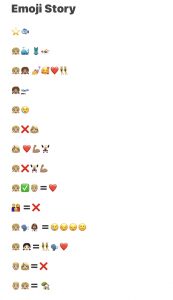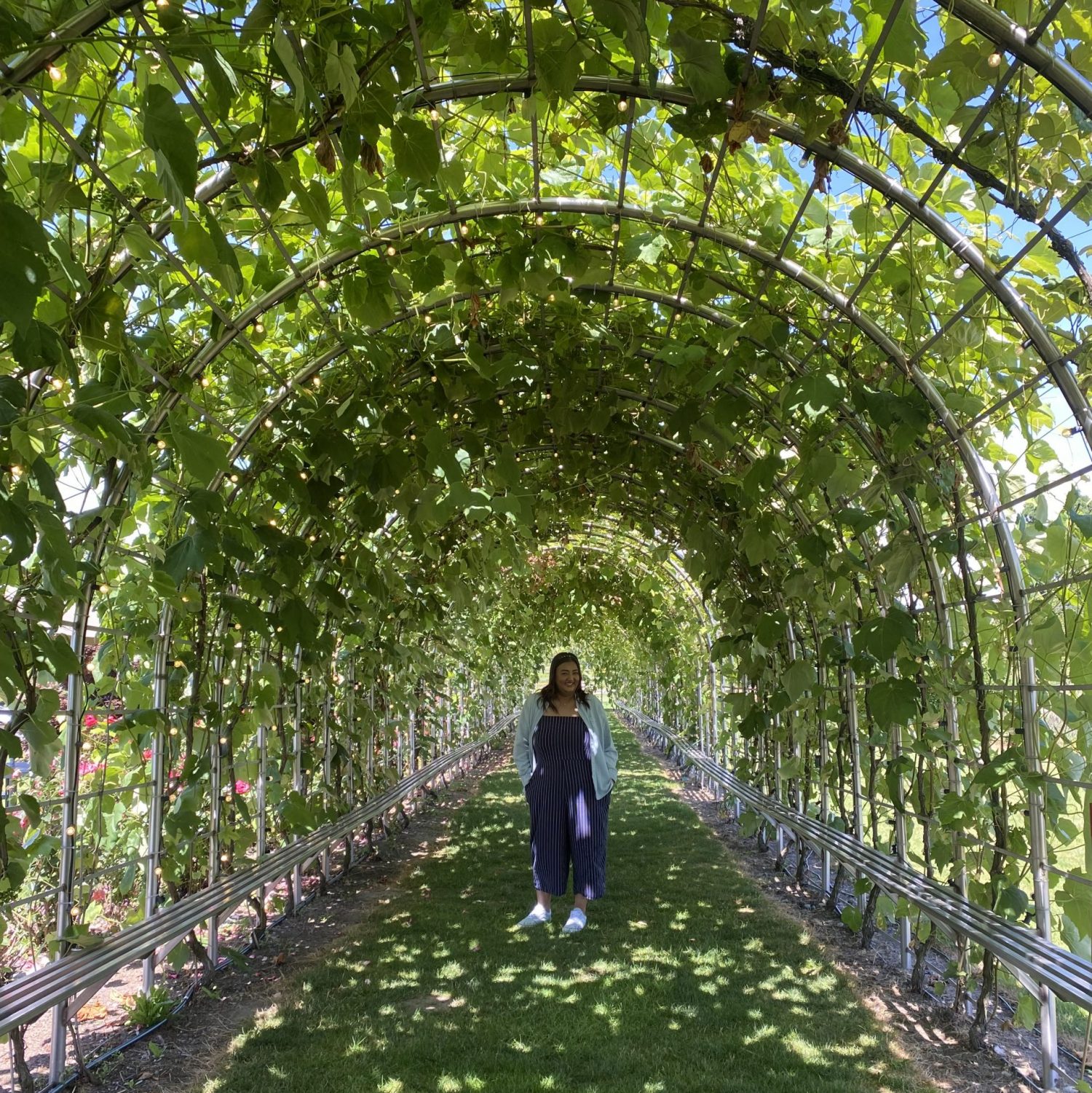
- Did you rely more on syllables, words, ideas, or a combination of all of them?
For my Emoji story, I chose a novel that some of my students are reading for novel study this term in my classroom. This is a middle grade novel and it is one I used for novel study for the first time last year because I really enjoyed it. I found the process of completing the emoji story a bit challenging because there were some words that did not have an emoji for them. I decided to stick only to my iPhone’s emoji keyboard as that is the one I use the most and wanted to be authentic in this process but I found this challenging when trying to complete certain parts. I think I stuck to the basics of the plot of the book as opposed to any specifics because it became very difficult to find images that worked.
- Did you start with the title? Why? Why not?
I started with the title of the book as that made the most logical sense to me but I was surprised that I needed two emojis as the title of the book is one word and I thought there would be an emoji for that word but there was not in my iPhone emoji catalogue. Kress argues that, “unlike words, depictions are full of meaning; they are always specific… on the one hand there is a finite stock of words — vague, general, nearly empty of meaning; on the other hand there is an infinitely large potential of depictions — precise, specific, and full of meaning (2005, p. 15-16). Although there is an infinite potential for depictions (or emoji’s in this case), I was limited to the depictions available in my iPhone which made the process increasingly difficult.
- Did you choose the work based on how easy it would be to visualize?
Initially, I had chosen a book because I do not have much time for watching television or movies right now and I also thought that a middle-grade novel, written in verse, would be a bit easier for me to summarize using emoji’s but, I was quickly proven wrong. I also feel that I may have “cheated” or taken an easy way when I utilized the checkmark emoji, the x emoji, and the equal emoji to drive my story. There are many benefits to images in story, Bolter states that, “The use of images for cultural communication is nothing new. Even before the invention of the printing press, the Middle Ages had developed a sophisticated iconography that served in the place of words for a largely illiterate audience” (2001, p. 54). The difference between many Middle Ages cultures and today is that there is no set of rules or norms when it comes to the use of these types of images or emojis. Emojis are up for interpretation; what I view as important and how my brain chose to showcase a therapist in my emoji book summary may be different for another.
References
Bolter, J. D. (2001). Writing space: Computers, hypertext, and the remediation of print (2nd ed.). Lawrence Erlbaum Associates.
Kress, G. (2005), Gains and losses: New forms of texts, knowledge, and learning. Computers and Composition, 2(1), 5-22.

Hi Sonia,
Thank you for sharing your post. I would love to analyze your emoji story, but the picture is a little too pixelated for me to read. Would you mind posting a higher quality version of it please? Thank you 😀
Hello Phi,
Can you see it better now?
Yes, much better, thank you! Here is my attempt at translating your emoji story:
Star fish
main girl goes swimming with fish (or is a mermaid?)
main girl meets another girl and they become friends
friend leaves
main girl is sad
main girl does not like other girl
other girl likes to exercise
main girl does not like to exercise
main girl meets a boy and falls in love
but they do not have a family
main girl meets with doctor and gets a sad diagnosis
main girl and another friend girl dance and talk about love
boy and other girl do not work out
boy and main girl live together
How did I do? Obviously, I have no idea what this story is referring to so apologies for the terrible translation haha
Hi Sonia,
Thank you for sharing your emoji story. I appreciated your comment on the lack of rules used in the Middle Ages and today in using images to relay a message. I somewhat disagree, because we have a set of images we must use (emojis), this is the rule. However, I do agree that they are up for interpretation, although much of the text of the Middle Ages and today is also interpreted (whether it’s interpreted well or not is up for debate).
Thank you for sharing.
🙂 Dana